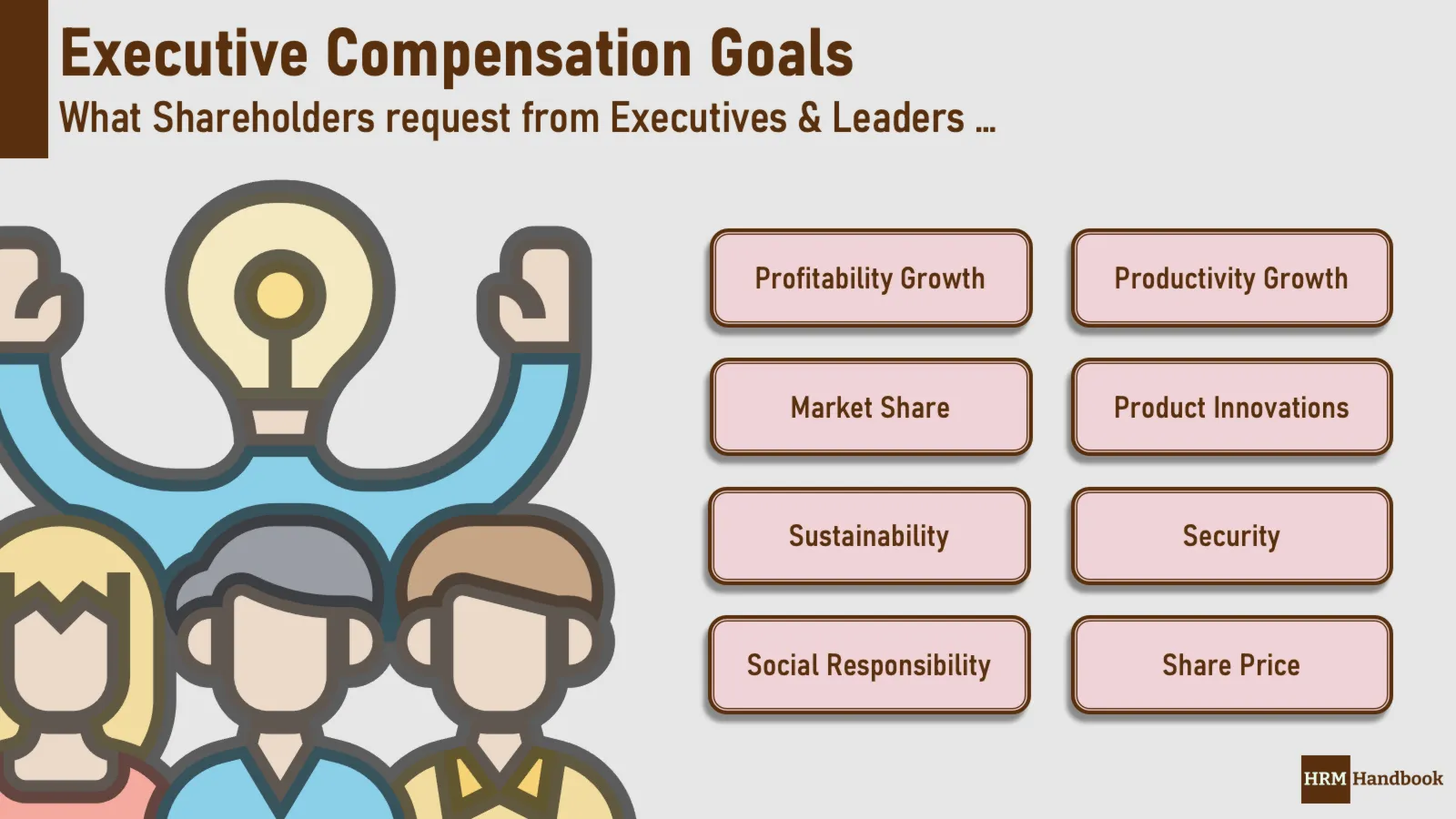Executive Compensation Plans
The top executive compensation is a special and specific area of compensation and benefits, which is usually confidential and it is not open to all employees in the organization. The top executives hold the responsibility for the organization, they lead the development of the organization and they have a tremendous impact on the results of the organization.
The compensation scheme of top executives has to reflect the responsibility and it has to provide the security to the top executives to use the personal responsibility and to take courageous decisions.
The executive pay is about the focus on the short-term performance and the long-term sustainability of the organizational development. The top executives are motivated to search for the cost-cutting potential and focusing on the sales and performance growth in the long-term perspective as the shareholders can realize the benefits of being involved in the organization.
Executive Compensation Principles
The executive pay has to reflect the role of the executive top management in the organization. The executive management drives the development of the organization and the executive compensation has to be aligned.

The executive compensation changed dramatically over the last two years as the financial crisis showed several issues with the executive pay, which was too focused on the growth of the organization while ignoring the sustainability of the organization.
The executive compensation consists usually from two main parts:
- Short Term Pay
- Long Term Pay
The short term pay of the executives is about the base salary and short term bonuses, which are paid on the basis of the immediate performance of the organization. The bonuses are usually deferred over a period of time. The short term pay is usually fully cash based executive compensation component.
The long term pay is about the stock options, shares, restricted stocks and pay based on the performance against the index. The shareholders use these long term compensation components to protect the value of the organization and betting of the top executives on the growing value of the organization on the market. The long term compensation components can be realized just in case, the stock price of the organization grows. The long term pay component is usually non-cash based.
In the modern organizations the short term pay is just a small part of the total cash of the top executives.
Key Principles of Executive Compensation
Top management needs an outstanding compensation plan. The executive management is responsible for the delivery of the business results to shareholders. They represent the company to the outside world. They handle the strategic initiatives. They are in a risky position. Their job contract can be cancelled within minutes. They want the protection. The executive compensation plan has a highly motivating component, and it guarantees the income protection in case of the job cancellation.
The shareholders buy the shares of the company to keep the value of money. They expect even more. They expect to earn the extra from the increased value of shares. The top management is paid for the constant increases in the valuation of the company. It is an absolute rule of the business.
The shareholders define the executive compensation plan. They usually cooperate with the CEO, who engages Human Resources in the process of designing the executive compensation. The shareholders define targets; shareholders expect the executive management to reach targets.
The executive managers are not paid for developing the warm and friendly environment in the organization. They are not paid for the sympathetic and people oriented corporate culture, when it does not bring benefits of increased profits for shareholders. The company exists to make profits, it does not exist to employ satisfied employees.
The principles of the executive compensation are:
- Clear focus on profits generation
- Long-term orientation of the compensation scheme
- Motivation of manager by high bonuses
- Non-cash focus of the compensation (stock options, shares, share phantom schemes)
- Risk Management
- Balanced Scorecard implemented into the Compensation Scheme
The executive compensation scheme has to support goals given by shareholders. The executives take risks of failing. They have to be over-compensated for meeting goals. They should receive an enormous extra bonus for exceeding the expectations (goals given by shareholders). The balance in the compensation has to be in favor of exceeding goals.
The HR Professionals have to support the CEO in setting the executive compensation scheme, which support the top management in pushing the organization. The top managers have to make tough decisions. They have to be compensated for overcoming the stress, the pressure of the line management and employees’ complaints about constant changes in the business operation.
Human Resources has to understand the main business goals. HR has to help in setting the executive compensation and alignment with the performance based compensation for the rest of the organization.
Executive Compensation Risks
The executive compensation is sensitive to the right setting as the short term and long term components of the pay have to be in balance as the organization does not suffer from the imbalances in the managerial decisions. The organization should always focus to balance the short term remuneration (which is valued more) with the potential to get more in the future. It is always difficult to find the right balance and the shareholders have to be in the agreement with the top management.
Excessive compensation
The excessive compensation is always more the issue of trust and confidence of employees and shareholders. The executive compensation scheme has to include the holdbacks and claw-backs and safety brakes for the case, the organization outperforms hugely the market. Each executive compensation scheme needs caps and floor as it is manageable in all situations, which can happen on the market.